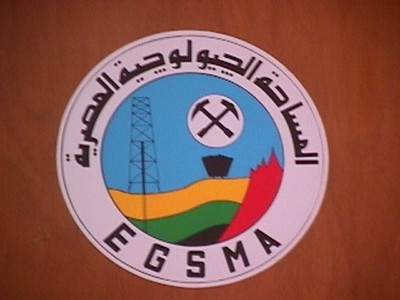
THE EGYPTIAN MINERAL RESOURCES AUTHORITY
(The Egyptian Geological Survey (EGS) )
Its services and consultation skills
[email protected]
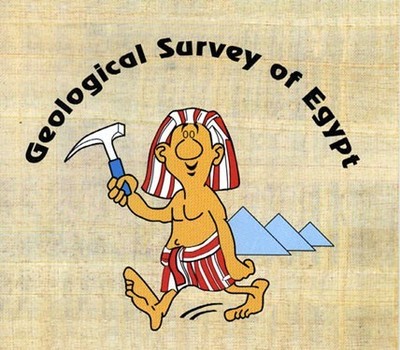
THE EGYPTIAN MINERAL RESOURCES AUTHORITY (EMRA)
(The Egyptian Geological Survey (EGS) )
Its services and consultation skills
The Egyptian Geological Survey (EGS) was established in the year 1896 as The tasks and duties of the EGS are similar to those of most geological surveys worldwide, and include mapping, grass-roots mineral exploration, geohazard and geoenvironmental studies, hydro geological studies and services to the community. The EGS maintains support teams of geophysicists, remote sensors, GIS and database specialists, as well as laboratory and publication arms, that will allow it to provide a full range of earth-science information about the Stat
Under the terms of its establishment, the EGS will be able to provide, on a contract basis, a number of its services and consultation skills to the public and private sectors.
|
Sector of Technical Services
|
|
Sector of Finance and Administration
|
|
Ore Evaluation Department
|
|
Pilot Projects Department
|
|
Technical and
Environmental Department
|
|
Regional Geology
Department
|
|
Geological Museum Department
|
|
Sector of Mining Projects
|
|
Sector of Geological Survey
|
|
Sector of Mining and
quarries
|
|
Agreement& Technical Cooperation
|
|
Sector of Central
Laboratories
|
|
Mineralogical& Geochemical
Studies Labs
|
|
Mineral Processing& Extractive Metallurgy
Labs
|
EGS also has the flexibility to operate abroad and can form partnerships with private companies or with other earth science agencies.
Mission and Vision
Mission
Using trained professionals, advise the government and the community on earth sciences. Utilize advanced technology to acquire and interpret geoscience information, and develop sustainable mineral and water resources. Protect the environment and monitor geohazards to secure a better life for our people.
Vision
The Egyptian Geological Survey is a valued earth science organization serving our community and customers to create a healthy environment. Using technology and rewards that enhance our ability to achieve our goals, we provide a better quality of life to our nation.

Services in geologic mapping, topographic surveying and remote sensing are provided by the following departments:
Geologic survey
Geophysical survey
Surveying support
Remote sensing
Geologic surveying is the primary activity of national geologic survey organizations in most of the world’s countries. Geological maps provide strategic information on resources, ground conditions and natural hazards that is geared to a broad constituency of direct users and indirect beneficiaries in government, industry and the public.
EGS geologic survey programs continue to build on this base of existing mapping completed by its predecessor organizations. Work is concentrating on gaps in the existing map coverage, or on selective revision of existing maps in response to new information, new scientific understanding or changing user requirements.
A typical geologic survey in EGS follows a series of steps:
1. Acquiring, interpreting and databasing existing geologic data
2. Interpreting aerial photographs and multi-spectral satellite imagery.
3. Geological mapping in the field, including verifying airphoto and satellite imagery interpretations, measuring and sampling rock exposures for lithologic, sedimentologic, and biostratigraphic data, and reconnaissance level mapping of resources and geohazards
4. Interpreting field work data and analyzing samples
5. Compiling digital geologic maps using GIS technology
6. Publishing of geologic maps and accompanying reports.
The EGS Geologic Survey department can provide mapping services to external customers at a range of scales ranging from regional reconnaissance to local site-specific investigations. Various thematic outputs can be produced on request in the form of maps, GIS data and accompanying reports. Typical products are:
Regional scale maps
1:500,000, 1:1,000,000, 1:2,000,000 scales
Lithofacies maps
Structural and tectonic maps
Geographic maps
Medium scale maps
1:50,000, 1:100,000 and: 250,000 scales
Structural and tectonic maps
Geomorphologic maps
Surficial deposits
Metamorphic and alteration maps
Urban geology maps
Mineral belt maps
Site specific scale maps
1:10,000, 1:5,000, 1:2,000
Mineral prospect sites
Engineering project sites
Maps for micro-seismic risk assessments
Structural maps for mineral prospects
Jointing maps for ornamental stone quarries
Geochemical Survey
EGS has a strategic plan for regional geochemical surveys in Egypt. These investigations will provide essential natural baseline data on chemical-element distribution and anomalies to underpin future mineral exploration, geochemical exploration, and geologic mapping by EGS, and to assess and monitor numbers of elements related to the maintenance of a healthy environment. Results will be databased and published as a contribution to the Geochemical Atlas of Egypt.
The survey procedure for each 1:250,000-scale quadrangle area involves extensive sampling of wadi sediments, which are then processed by sieving, mineral concentration, and concentrate splitting. One split is chemically analyzed for several elements; the other is archived for future studies. Results are entered into the EGS Integrated Geoscience Database, and plotted in a variety of formats showing sample locations, element distributions, element contours, geochemical anomalies, and correlation maps. Final reports, covering each quadrangle area will provide interpretations of the data, listing anomalies, highlighting areas for exploration follow-up, and delineating areas of environmental concern.
Geophysical surveys provide essential data in support of the surveying, exploration and environmental projects carried out by EGS. Geophysical techniques have broad utility because they measure a variety of physical phenomena or properties. These include gravity (density), magnetism (susceptibility and remanence), electric-current flow and electromagnetic wave propagation (resistivity), seismic waves (elastic wave velocity), heat flow, and radioactivity. Passive methods such as gravity and magnetic surveys measure existing potential fields, whereas active techniques such as seismic or electromagnetic methods measure the response of the Earth to controlled sources of energy.
EGS uses geophysics for a wide range of applications at various scales of investigation. In exploration geophysics, the main objective is to map structures that are of potential economic importance, such as those that control the location of ore deposits and petroleum reservoirs or to define the character of an aquifer. In geologic mapping, geophysics is commonly used to differentiate rock types and characterize their contacts. In the fields of geohazards and the environment, geophysics is used to measure features such as the magnitude and location of earthquakes and earthquake epicenters, and the levels of naturally occurring radiation
During the past seven decades, geophysical methods have contributed significantly to geologic mapping and exploration for hydrocarbons, minerals and aquifers in Egypt, and aided the discovery of several ore deposits of economic significance in Egypt..
Airborne surveys controlled by GPS navigational systems allow many geophysical methods to be applied over wide areas with consistent, high-quality resolution, and are a cost-effective way of obtaining effective coverage for both regional mapping and detailed studies. While there may be some loss of resolution compared to ground-based methods, this is usually more than compensated by the uniformity of coverage and data quality.
Airborne data employed by EGS include magnetic, radiometric and electromagnetic surveys, and these lay a foundation for detailed follow-up ground-based measurements if required.
Available geophysical Services:-
Disablement of Geophysics sharing. EGS in geophysical fustigations in both surface and subsurface exploration, in situ and laboratory.
For mentioned fields (mineral, groundwater, geophysical mapping, numerous Geoenuiron mental applications studies, geotechuieol studies and geoarchiologycal studies.
Doing These jobs using up-to-date Instruments and software for Data Acquisition, processing and Interpretation of these Instruments as an Example are ground Magnetic prospecting Sinter enigma proteome entoleter with precession of 1 not ( panatela ) – gamine for mapping Total intensitymasne earth magnetic field & vertical magnetic grodieiend nt/m ground gratuity prospecting :-
Centrex (G3 & (Gs gravimeters with accuracy of 0.1 mg al for gravity mapping of gravitational Cougar map of earth.
- VLF (very low frequency) EM mapping for locations of conductive Zone bodies of economic minerals and ores IGS2 VLF -4 Scoured.
- EM militia frequency IGS -2 EM – 2 Scene Genotype.
- Resistively and IP (Induced polarization) time & frequency. domain Respite: ohms never domain of yuck formations IRIS Instrument E lyric-T multi channel Tomography.
- Ground penetrating radar (GPR) using SIR 10 – A with different antennas frequency including (100, 300, 500, 100 MH2).
- Shallow Seismic exploration for shallow geophysical and geotechnical exploration using Messes OYO corporation Dash instruments with 24, 48 channels bespoke.
- Geo Radiometric exploration using GAD – 6 m multichannel fray spectrometry field and lab exploration geophysical properties.
- Well Logging and well evaluation using an up to data well loss station of Hose are Rusticity, natural gamma ray, density, sonic , etc ) earth quacks seismology seeks for earth quack Ha2ards.
- In Side exact location using Aztec GPS siskin Physical , mope tics of rock evaluation of Magnetic Susccbtibitity using kappa meter Instrument rock density, moisture contend, porosity, resistivity .
- Geophysical Instrument its calibration so an example for geophysical data processing & tuber petition include goof for geophysical data mapping and processing ,seizer (seismic Refraction process.& enter First pix ( seismic Refraction soft ware )Remix seismic sees vision Inner.& mapping system seizure reflection Seismic Data price. soft Radon (GPR ) Resist IP( Rims.) Rees 2D Innu ( Rises )
Surveying Support Services
The EGS Surveying Department plays a vital role in support of EGS field-based project work, in geologic mapping, mineral exploration, hydrogeology, marine geology, geophysics, and engineering geology, and wherever else field surveying services are required. The department also offers surveying services to clients in other government agencies and the private sector.
In addition to traditional survey equipment such as theodolites and leveling instruments, the department is comprehensively equipped with an array of up-to-date electronic surveying, total-station, digital level, GPS and GNSS equipment, including:
. Trimble R8 GNSS.
2. Leica SR530 GPS.
3. Leica TC1100 total station.
4. Topcon GTS-211D total station.
5. Topcon GTS-2 total station.
6. Leica NA2002 digital level.
The engineers in the department using the professional software including Autodesk Civil 3D, LisCAD, Geomatics Office, Ski-Pro and Surfer to correct, process data and producing survey maps with different shapes and scales
The following services are offered:
1. Topographic survey.
2. Leveling network implementation.
3. Calculations of land area and volumes of study zones.
4. Establishing ground control points.
5. Using GPS to correct coordinates of satellite images.
6. Production of survey maps, contour maps, and 3-dimensional terrain models.
Mineral exploration
The minerals sector of the Egypt’s economy is an area of major significance and great promise, one that must be enhanced and expanded. Consequently, the Egyptian Geological Survey places considerable emphasis on its mineral exploration programs, using highly trained staff and modern techniques to explore for metallic and non-metallic (industrial) minerals, and drawing on the support and technical skill of a range of in-
house analytical laboratory facilities.
The primary goals of our mineral exploration programs are to explore and evaluate particular prospects or mineral belts and secure greater national self-sufficiency in resources. EGS also conducts pre-feasibility and feasibility studies of known deposits, whether the target commodity is a precious, strategic, or base metal, or a non-metallic resource. We also provide advisory and consultancy services for potential investors to evaluate the quality and quantity of resources at specific prospects.
Technical and resource information on mineral prospects is gathered using a variety of investigative techniques including geochemical and mineralogical sampling, drilling, trenching and geophysics. All new exploration data is entered into the EGS Mineral Occurrences Database, which is also being populated with historic data collected by EGS predecessor organizations
EGS Programs in Metallic Minerals
Survey and exploration by the EGS Metallic Minerals department is guided by a long-term Regional Reconnaissance program that identifies potential exploration targets based on documentary records, known ancient mining, and regional geological, geophysical and geochemical survey data. Targets are then followed up by more detailed surveys of individual prospects to determine potential resource value and attract potential investors. Analysis of ore samples is carried out by the EGS Chemical and Petrology Laborites.
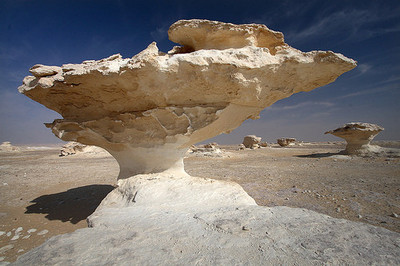
EGS Programs in Industrial Minerals
Our industrial minerals team consists of experienced exploration geologists and engages in both EGS and community-funded projects throughout Egypt Exploration is supported by EGS drilling and field support teams and by the EGS Chemical and Industrial Mineral Applications laboratories.
Priorities for the EGS strategic program of exploration projects are formulated in response to statistics on national and regional mineral extraction, usage and anticipated needs, and in consultation with forums of key investors.
All new project data is added to the EGS Mineral Occurrences Database. Outputs are delivered as reports, maps and GIS. These products and databases are the source information for our advice and consultancy services, described below.
Services to the Community
The EGS Industrial Minerals Department offers an advisory and consulting service to investors by providing information on the location and availability of industrial minerals within Egypt, and by carrying out contracted exploration and evaluation projects. Three levels of service are offered:
1. Information and advice on known prospects based on existing information. The product consists of a short report, packaged with available published or open file reports, maps and data.
2. Field visits, carried out by experienced EGS staff, to demonstrate prospects on the ground to potential investors and carry out additional sampling as directed.
3. Resource evaluation projects to survey individual prospects, determine quality and quantity, and provide feasibility assessments for future mining operations. These projects are usually carried out in partnership with the EGS Mining Development Department.
Mining Development
The objective of the EGS Mining Development program is to increase the contribution made by the Egyptian mining sector to the growth and diversification of the national economy, reduce reliance on imported raw materials, and encourage safe and environmentally sensitive development of mining operations in Egypt. We do this by:
Carrying out pre-feasibility studies of mineral resource locations using extensive drilling campaigns and ore processing tests in the laboratory and on-site
Advising on investment opportunities and market requirements for specific mineral commodities
Consulting on all aspects of exploitation methods and infrastructure, including mine waste management, environmental impacts and after-use options
Testing ores to refine processing methods and investigate new raw materials for industrial processes
Compiling and publishing national mining statistics for Egypt including information on mine locations and reserves, and on source, consumption and demand for each commodity.
Information Technology
The Information Revolution provides ever-growing opportunities to develop new tools and methodologies for geoscience surveys and research, new ways of handling, sharing and visualizing our data, and new ways of delivering knowledge and services to a global audience. In EGS, Information Technology underpins the management and publication of all our data and information, and is enhancing and diversifying the capability of all our geoscience programs, support services and administrative functions. In support of our geoscience programs, the main objectives of the Information Technology program are to:-
Compile, document and update geologic databases for mineral localities and drilling sites, and to archive sampling and analytical data for rock, soil and hydrogeologic investigations.
Establish a comprehensive digital database of geologic survey, exploration and applied geology data, and design and compile Geographic Information Systems for data analysis and delivery to customers.
Process satellite images and Thematic Mapper digital data for use by our survey, exploration and applied geology programs
Develop new systems and databases for primary digital recording of data by fieldworkers
Integrated Geoscience Database
Development and population of the EGS Integrated Geoscience Database is a major strategic project in EGS with the objective of digitally capturing, preserving and indexing the work of our predecessor organizations, and merging this with new, digital geoscience data collected by current EGS programs. The resulting database will serve future clients and programs of EGS with comprehensive and inter-operable digital geoscience data that can be visualized and delivered in a wide variety of user-specified formats and themes, and can be browsed and supplied to the community via electronic delivery
The Integrated Geoscience Database project has two main components:
Database development and management
Development and management of the Integrated Geoscience Database is emphasizing inter-operability of datasets to ensure wide application and exchange of information between the EGS and other organizations with similar interests, especially in management of groundwater, natural hazards, and mineral resources. Data structures are compatible with a variety of proprietary output software including GIS, statistical and borehole logging packages.
The database is managed using Microsoft SQL Server and built around a single relational data model with 12 interlinked domains and over 450 individual data tables. The domains reflect key applications of EGS information such as mineral occurrences, groundwater, and natural hazards, as well as survey activities such as mapping, drilling, geophysics, and chemical analyses. The principal domains are:
Geological Map Database
Geological Observations Database
Geophysical Survey Database
Geochemical Survey Databse
Water Resources Database
Seismology Database
Borehole and Drilling Database
Bibliographic Database
Mining Database
Geographic Information Systems
The EGS GIS department is responsible for digital capture and attribution of all maps produced by EGS survey and exploration programs. The department is well equipped with workstations running the latest ESRI ArcGIS 8 software. All new EGS printed maps are now produced by digital methods.
In addition to providing GIS data capture and digital map production services for current EGS projects, the department is also carrying out a number of strategic digitization and development projects.
Development of an integrated GIS data model and database
Digitization of existing geological and topographic maps
Digital maps of Saudi Arabian administrative regions
Development of an integrated GIS data model and database
This project is developing an integrated, relational data model and database for future management and delivery of GIS data by EGS. The data model will standardize the basic attribution and symbolization of point, line and area features on EGS maps to ensure seamlessness of GIS data coverage for the entire Kingdom. Links will be created to other attributes tables that describe a wide range of geological, environmental and resource properties. The GIS database will be incorporated into the EGS Integrated Geoscience Database to unify all EGS geoscience data and information within a single data management system.
Digitization of existing geological and topographic maps
This ongoing project has the objective of systematically digitizing and attributing all existing printed geological and topographic map coverage of Egypt, with the aim of building an integrated and seamless national databank of digital mapping. Current work is concentrating on the 1:250,000 scale geological and topographic maps, and is being prioritized to ensure that digital map and GIS coverage of the more densely populated and resource-rich parts of Egypt is completed during the early stages of the project
Remote Sensing
Spectral imagery data covering the thermal-infrared, infrared, visible, ultraviolet, radar, and gamma -ray wavelengths, obtained by sensors mounted in aircraft or satellites, provide a unique perspective and information about the composition and structure of rocks and other materials exposed at the earth’s surface. Remote sensing imagery is especially valuable as a geologic survey tool in sparsely populated arid areas, and its interpretation is therefore an indispensable step in all EGS geologic mapping, mineral reconnaissance and geohazard assessment projects.
Support for EGS programs
The Remote Sensing section offers services and training to EGS staff in the enhancement and interpretation of satellite data, and provides a range of hard-copy and digital products both for EGS internal project use and for external clients. Imagery is processed, enhanced and delivered using ERDAS 8.4 software.
Services to the community
EGS supplies remote sensing imagery mosaics to a wide client base in the government, industry, defense and education sectors.
Satellite imagery/maps can be delivered in a variety of paper sizes (A0, A1, A3, A4 or user defined) and types. Coated or glossy paper is more suited for posters and displays, whereas light coated paper is recommended for desk interpretation and fieldwork.
The Unit also offers training workshops for Earth Sciences students. The workshops familiarize trainees with the latest remote sensing technologies and provide practical exercises to demonstrate applications.
Publications and outreach
The EGS Publications department publishes the results of EGS programs, ensuring that these outputs are peer reviewed and edited to the highest scientific standards. It also manages the EGS library and maintains stocks of EGS maps, reports and books for external sale. Our main activities are:
Providing the technical and editorial support, including arrangement of peer review, to produce high quality geoscientific maps and reports in-house
Preparing educational and promotional material for publication and for conferences, exhibitions and seminars
Producing printed aerial photographs and topographic maps on stable and robust media for use by EGS fieldworkers
Managing the EGS Central Library and Reference Archive, which holds the most complete catalogue of published and open file reports, maps and manuscripts produced by the predecessor organizations of EGS.
EGS Central Library and Archive
The Egyptian Geological Survey maintains a scientific, technical and professional Earth-Science library at the EGS Cairo office. It is one of the largest of its kind in Egypt and is an important source of published and on-line Earth-science information for EGS staff and visitors, the Government and private sectors, mining companies, Universities, and Research Centers. It also houses archives of original field notes, manuscripts, and analytic data for EGS and earlier exploration and geologic projects.
The library contains a wide range of data and documents and a varied collection of geologic books and journals. The available materials are:
Books
Technical and Open-File Reports
Geological, Geophysical, and Topographic Maps
Professional and Research Papers
Special Publications
Booklets, Pamphlets, and Brochures
Major international geoscientific journals
On-line bibliographic databases.
Maps
The Egyptian Geological Survey and its predecessor organizations have produced hundreds of geologic maps, at various scales, over the preceding 4 decades. Most of these map products are for sale as hard-copy documents. A limited number of the newest map products can be obtained in digital formats.
The “GM map series” (Geologic Map Series) at 1:250,000 scale is the premier geologic map series of the EGS. This is an ongoing series of color printed maps, with accompanying explanatory notes, that will eventually cover the entire Egypt. The maps are 1 degree by 1.5 degree quadrangles, and conform to the 1:250,000-scale topographic map boundaries of the State..
In many cases, particularly in coverages of the GM-map products are compilations built on field mapping programs carried out at 1:100,000 scale. Many of the 1:100,000-scale maps are available for purchase although, as base datasets, these maps are part of reports of varying size and complexity and are individually priced.
In addition to the geologic maps available at 1:250,000 and 1:100,000 scales, EGS also has available a number of country-wide maps, shield-wide maps (at 1:1 million scale), and a range of specialized maps covering geology, aeromagnetic coverages, industrial minerals, etc.
- Topographic coverages are available at different scales, from 1:50,000 scale to 1:500,000 scale.
-
- GEOLOGIC MAPS AT 1:100,000 SCALE
- INDUSTRIAL MINERAL RESOURCE MAPS OF URBAN AREAS
- GEOLOGIC & GEOGRAPHIC QUADRANGLE MAPS AT 1:250,000 SCALE
- HYDROGEOLOGIC MAP, 1:250,000 SCALE
- AEROMAGNETIC MAPS AT 1:250,000 SCALE
- AEROMAGNETIC MAP COMPILATION AT 1:1,000,000 SCALE
- GEOLOGIC & GEOGRAPHIC MAPS, 1:500,000-SCALE
- LANDSAT-IMAGE MAPS AT 1:500,000 SCALE
- TOTAL-INTENSITY AEROMAGNETIC MAPS, 1:500,000 SCALE
- ARABIAN PENINSULA MAPS
- OTHER COLOR-PRINTED SMALL-SCALE MAPS
- RECONNAISSANCE GEOLOGIC MAPS
- MINERAL LOCALITY MAPS OF THE ARABIAN SHIELD
Reports
The Egyptian Geological Survey (EGS) has produced several types of technical reports, which can be accessed through the following links:
OPEN FILE REPORT
TECHNICAL REPORT
Training
EGS has an extensive range of training programs with emphasis on developing the geoscientific, information technology, managerial and English-language skills of its staff. Training comprises a combination of specific job-related courses, seminars and lectures, and participation in local and international conferences. EGS trainees also participate extensively in externally-provided courses on a part-time or time-release basis, and in geoscientific courses and seminars provided by staff from our partner organizations and other collaborators.
Laboratories and logistics
EGS maintains laboratory and logistical facilities to support its own survey and exploration programs and as services to external customers in the government, research and industry sectors.
EGS laboratories prepare and analyse rock, mineral, soil and water samples for a variety of downstream geoscientific, engineering and industrial applications. All our laboratories carry appropriate accreditation, and samples and analyses are prepared according to the applicable industry and research standards. Our laboratories are:
Chemical Laboratory
Water and Environment Laboratory
Petrology Laboratory
Industrial Applications Laboratory
Engineering Geology Laboratory
Chemical Laboratory
The EGS Chemical Laboratory carries out chemical analyses to provide baseline knowledge of the geochemistry of the rocks, soils and sediments of Saudi Arabia and its adjacent offshore territories. The analyses have applications for geologic mapping, metallic mineral exploration and the identification of sources and pathways for natural and man-made contamination of the environment.
 Annals Geol. Surv. Egypt , VXXIV (2001 ) , PP ,
Annals Geol. Surv. Egypt , VXXIV (2001 ) , PP ,


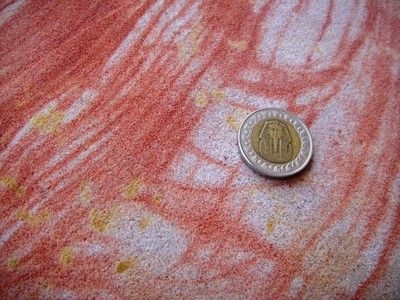




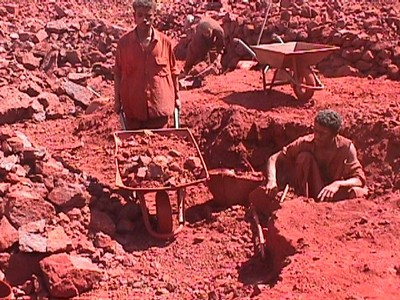 for more information
for more information